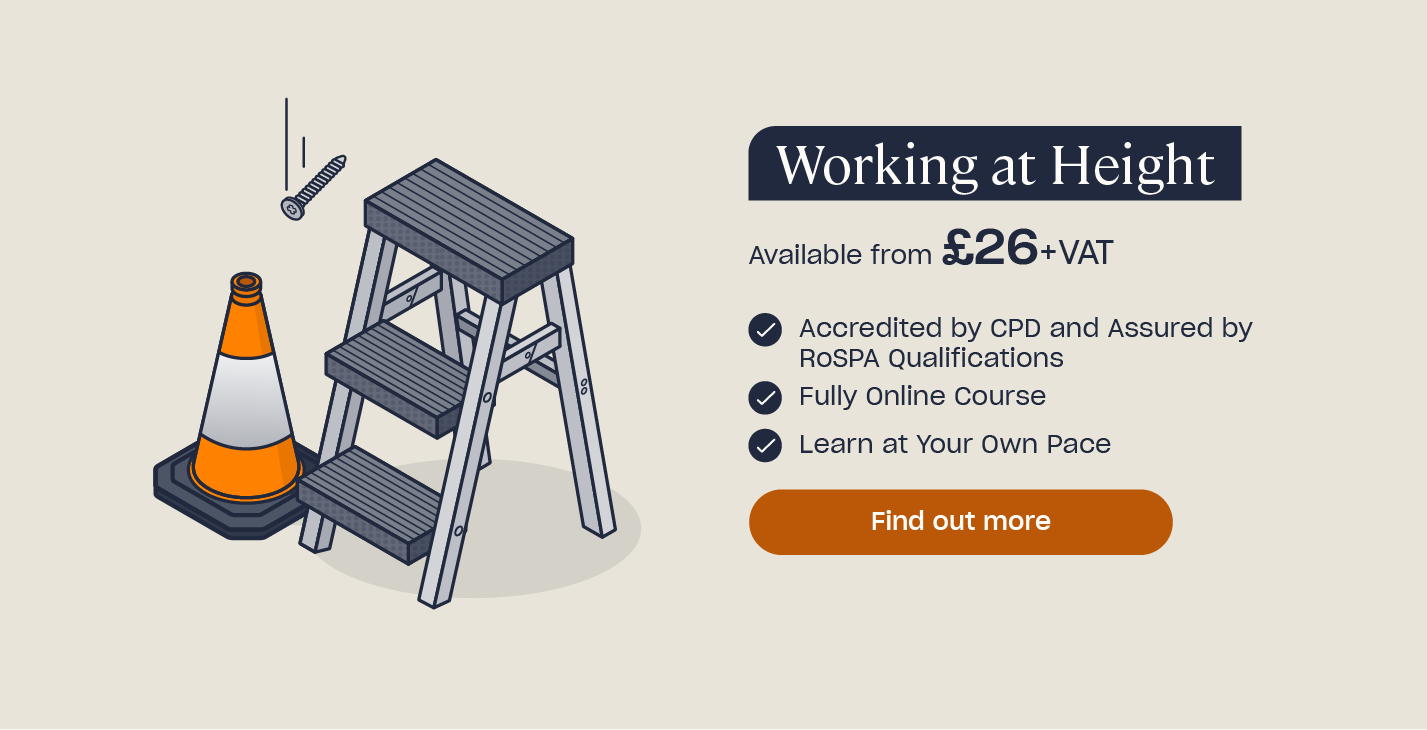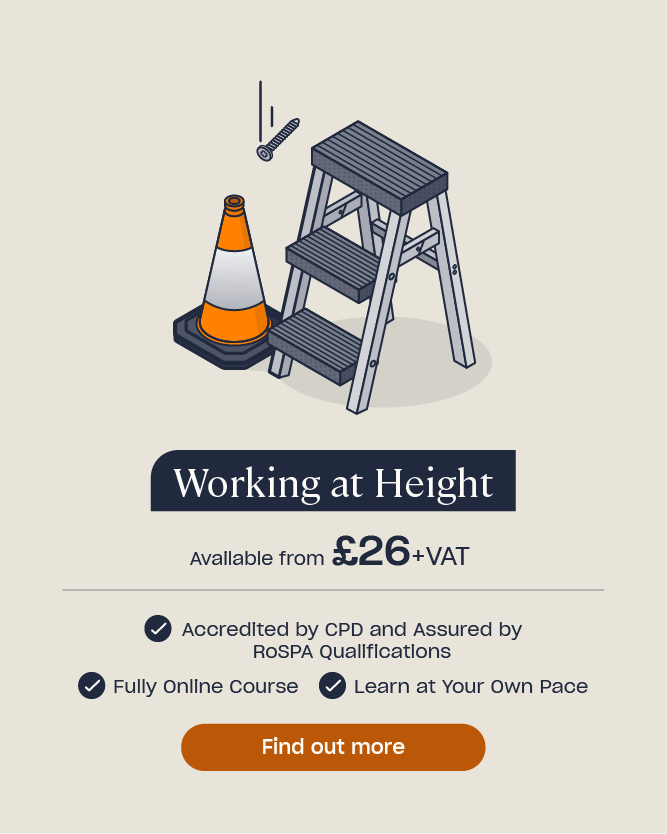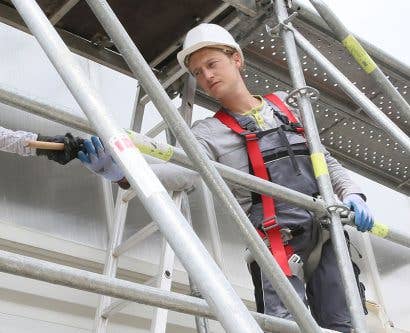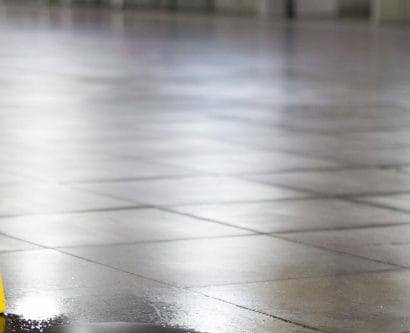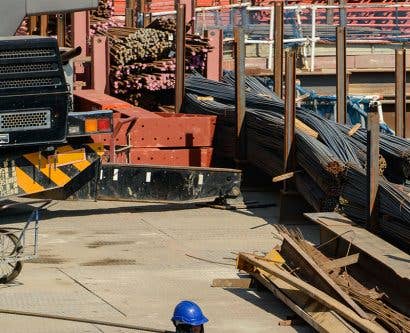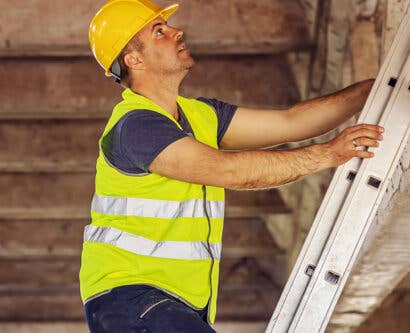Working at Height Regulations – Hierarchy of Control Measures
According to the Health and Safety Executive, working at height is the construction industry’s top cause of death and major injuries in the workplace. The HSE defines “work at height” as follows:
“Work at height means work in any place where, if there were no precautions in place, a person could fall a distance liable to cause personal injury.”
The Work at Height Regulations 2005 sets out the measures that should be taken to prevent falls when working at height is unavoidable. The Hierarchy of Control Measures, which we’ll look at throughout this article, can be used to determine which measures should be prioritised.
Hierarchy of Control Measures
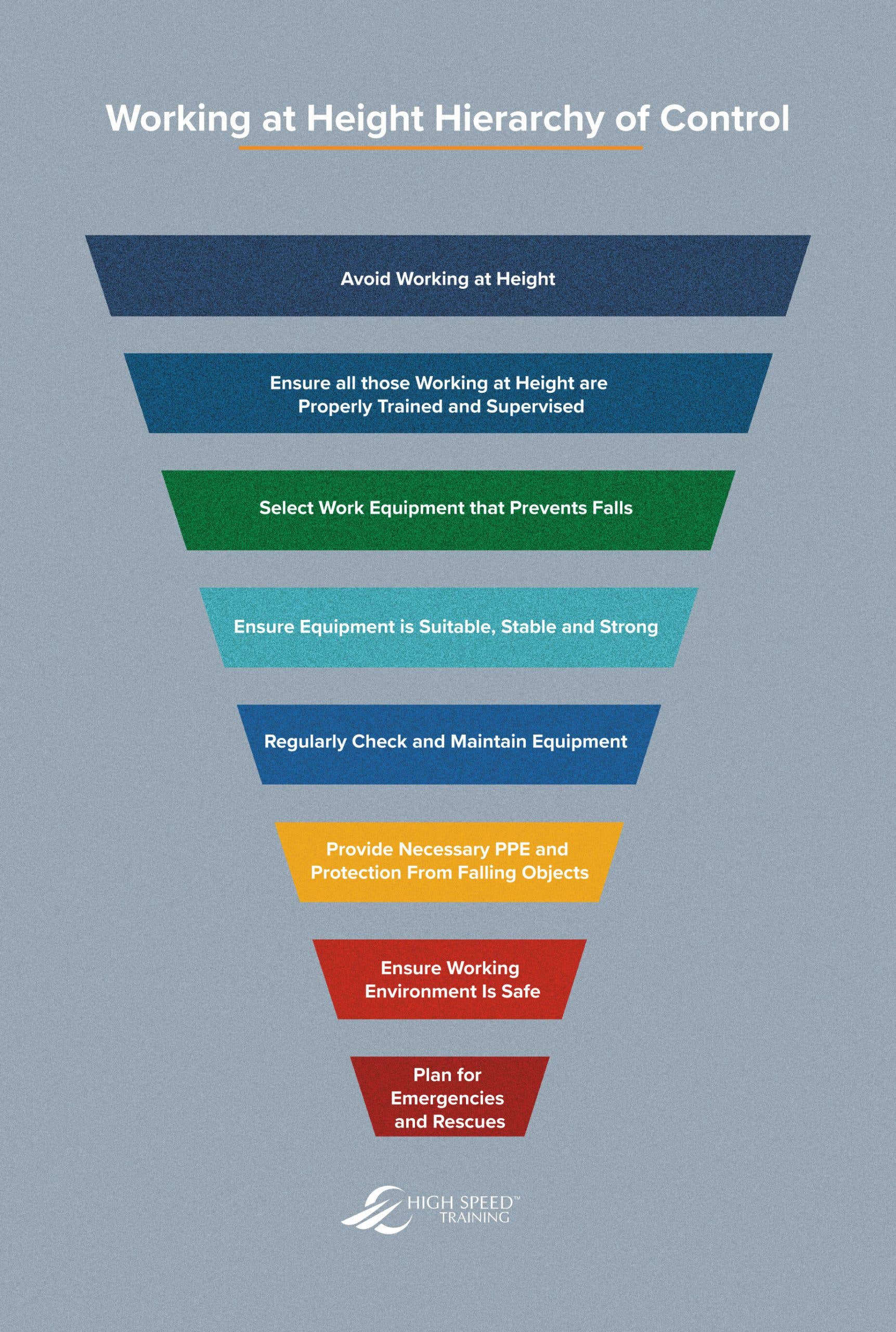
Level 1: Avoid Working at Height
The underlying principle of the Work at Height Regulations is that working at height should be avoided wherever possible. This essentially means doing as much work as possible from the ground, using extending tools instead of a ladder, or lowering something to ground level before repairing it. Avoiding work at height also means avoiding work on fragile surfaces, which may be enclosed, but still liable to cause a fall through them rather than off them.
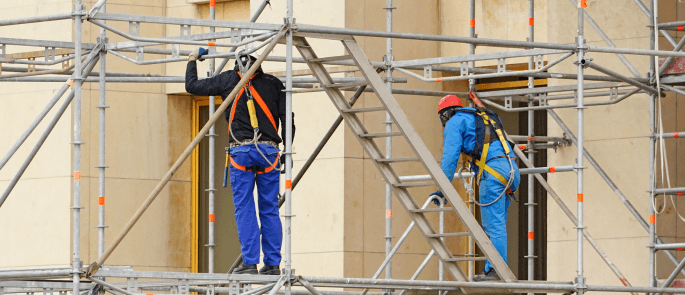
Level 2: Ensure All Those Working at Height are Properly Trained and Supervised
This involves minimising the risks by providing sufficient training and supervision to ensure people can work safely. Workers should be educated to ensure they apply best practice guidelines for carrying out work at height, including the use of any equipment. If harnesses are being used, Safety Harness Training is highly advisable. Supervisors should be competent to do so.
Need Working at Height Training?
Our Working at Height Training helps you to comply with the Work at Height Regulations 2005 by providing employers and employees with the necessary information needed to be able to successfully deal with working at height risks and control measures.
Level 3: Select Work Equipment that Prevents Falls
If working at height can’t be avoided, prevention is better than mitigating the consequences of a fall. Prevention starts by selecting equipment that will prevent falls from occurring, such as those with suitable guard rails. You should only select work equipment for mitigating falls, such as safety nets, if fall prevention isn’t possible.
Level 4: Ensure that Equipment is Suitable, Stable, and Strong
The duty holder, usually the employer, is in charge of ensuring equipment is suitable, stable, and strong for the intended tasks. To ensure equipment is suitable, they will need to assess the risks involved in the work and select accordingly.
Level 5: Regularly Check and Maintain Equipment
Equipment should undergo regular inspections, thorough examinations, and maintenance. Pre-use checks by users are crucial for detecting day-to-day issues and wear and tear, while thorough examinations and maintenance must be carried out by competent persons at certain intervals depending on the equipment.
Level 6: Provide Any Necessary Personal Protective Equipment (PPE) and Protection from Falling Objects
If the risk assessment determines that personal protective equipment is necessary, the employer must provide it to workers, such as hard hats and fall arrest harnesses. On most construction sites hard hats are necessary, and will likely also be required for work at height in other industries where falling from height and overhead falling objects are a risk.
Level 7: Ensure the Working Environment Is Safe
This includes considering weather conditions and proximity hazards that could make work at height unsafe, such as high winds and fog. Working at height could also involve working near dangerous obstacles, such as power lines and so this must be considered.
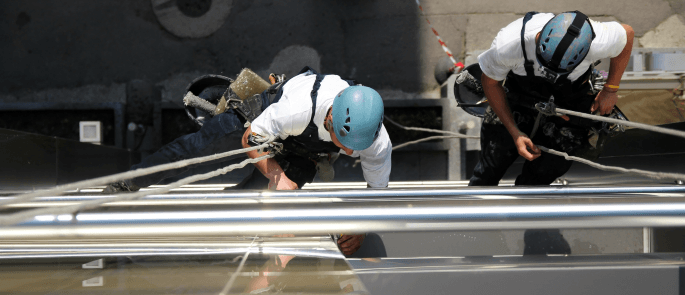
Level 8: Plan for Emergencies and Rescues
Having emergency plans in place is crucial in case things do go wrong. Plans should be communicated to everyone involved in the work.
If you’d like to download a visual representation of this hierarchy, use the button below.
Working at height can pose real and serious risks, but these can be controlled with the right safety measures and by following the hierarchy of control. Employers should ensure they do everything necessary to reduce the risks of a fall and other associated hazards, so employees can remain safe at work.
What to Read Next:
- Working at Height Risk Assessment Guidance
- Working at Height Quiz
- How to Develop a Rescue Plan for Working at Height
- What is a Method Statement & How Do I Fill it in?
- Working at Height Training


